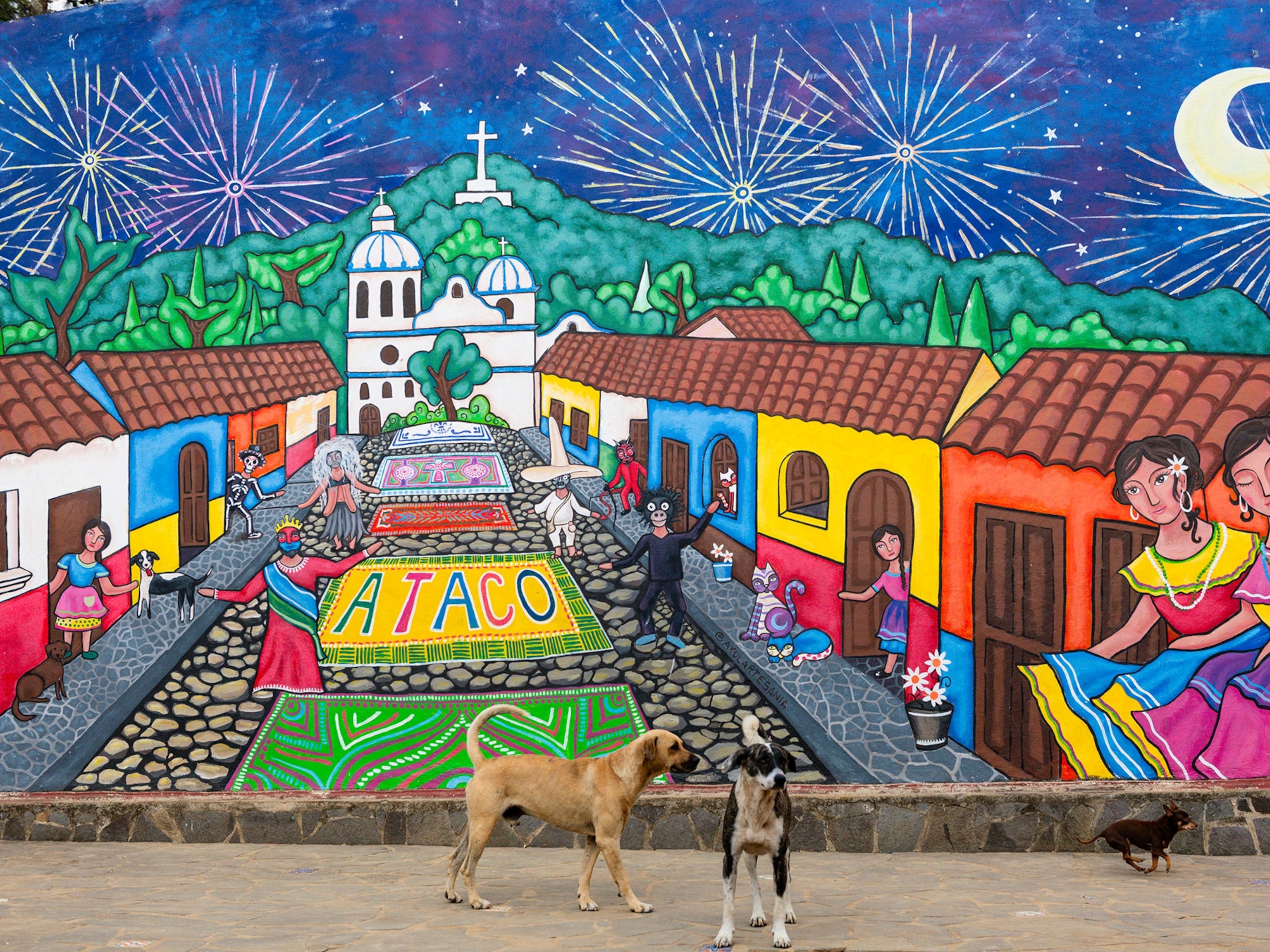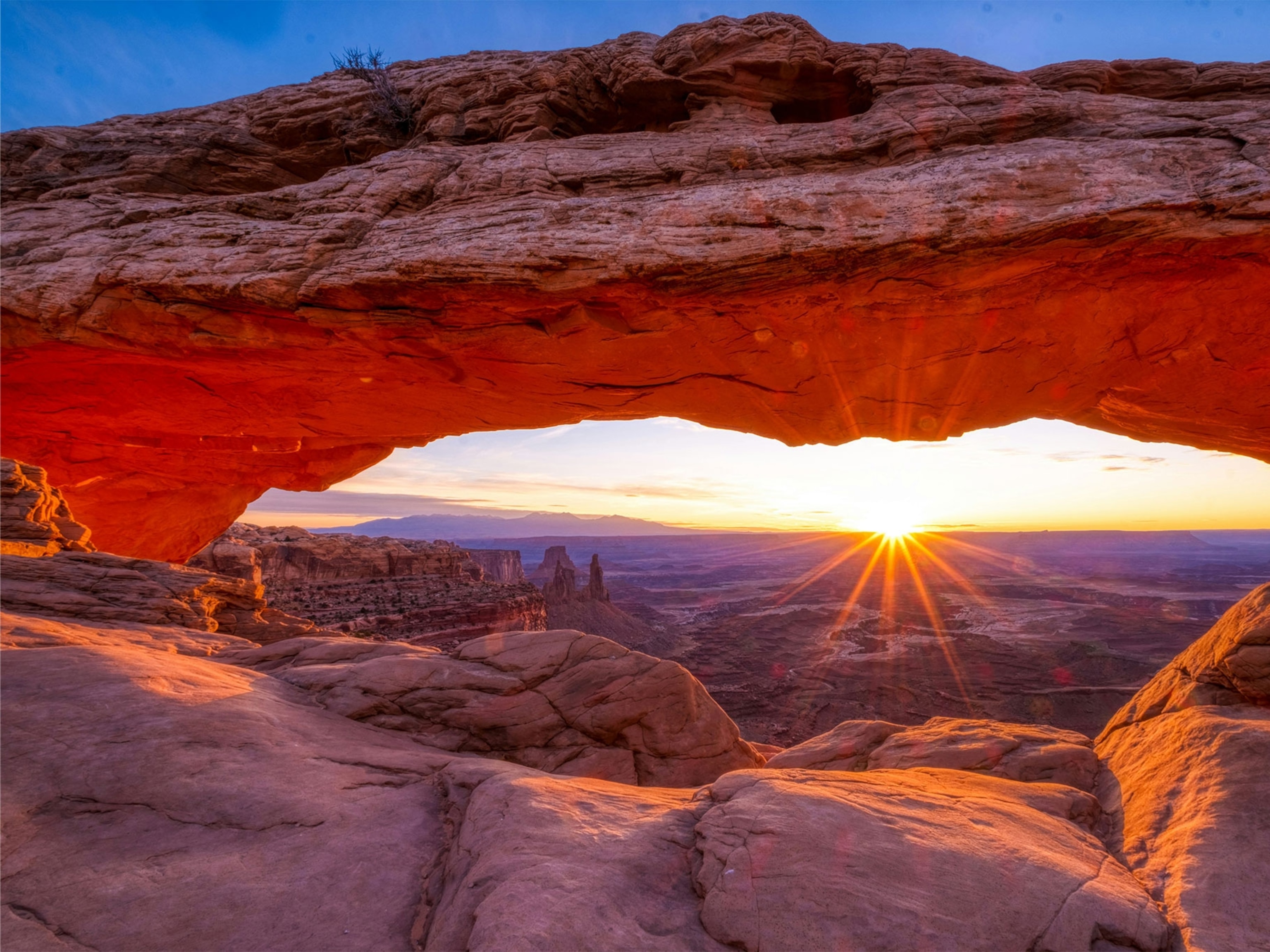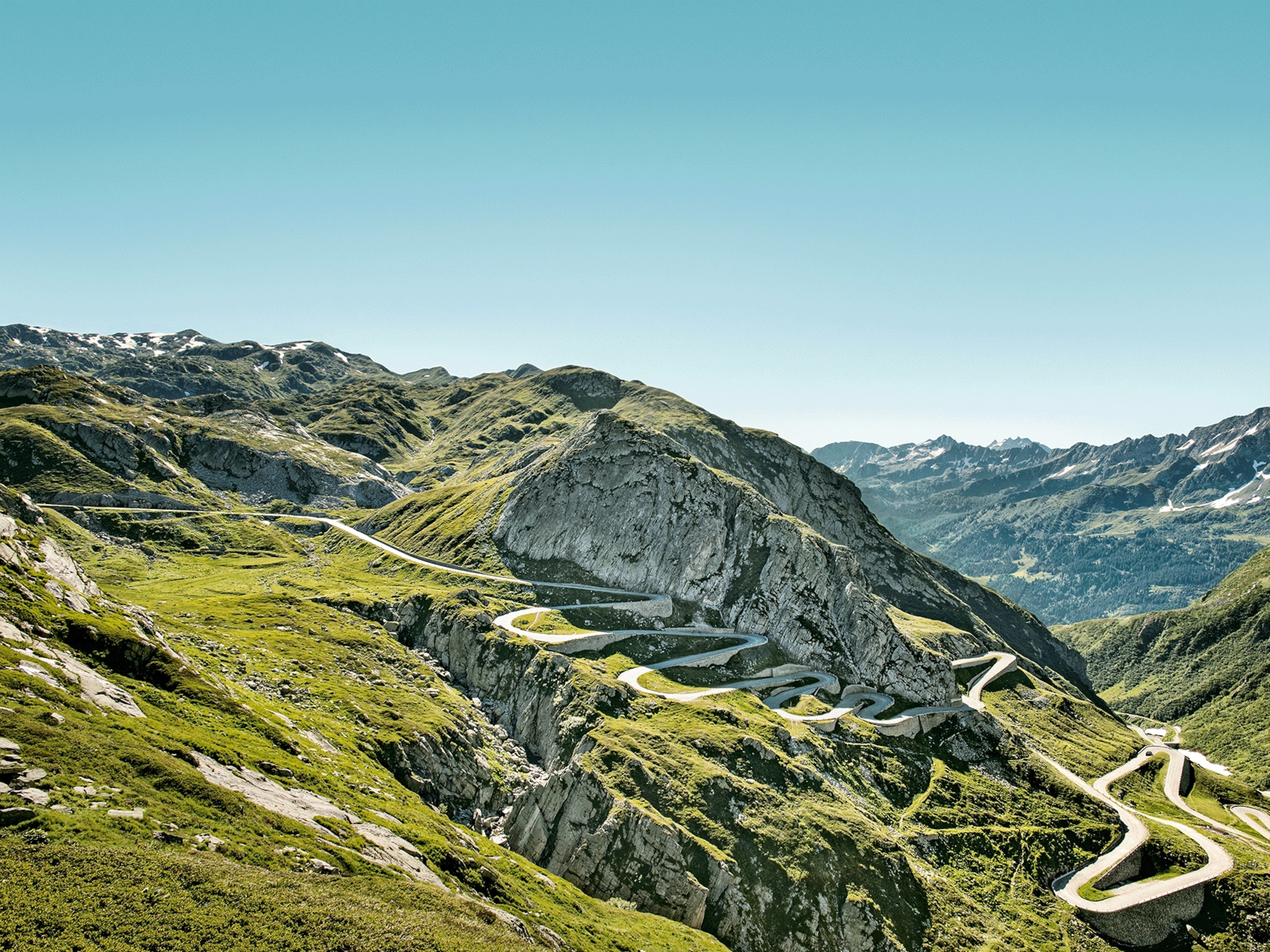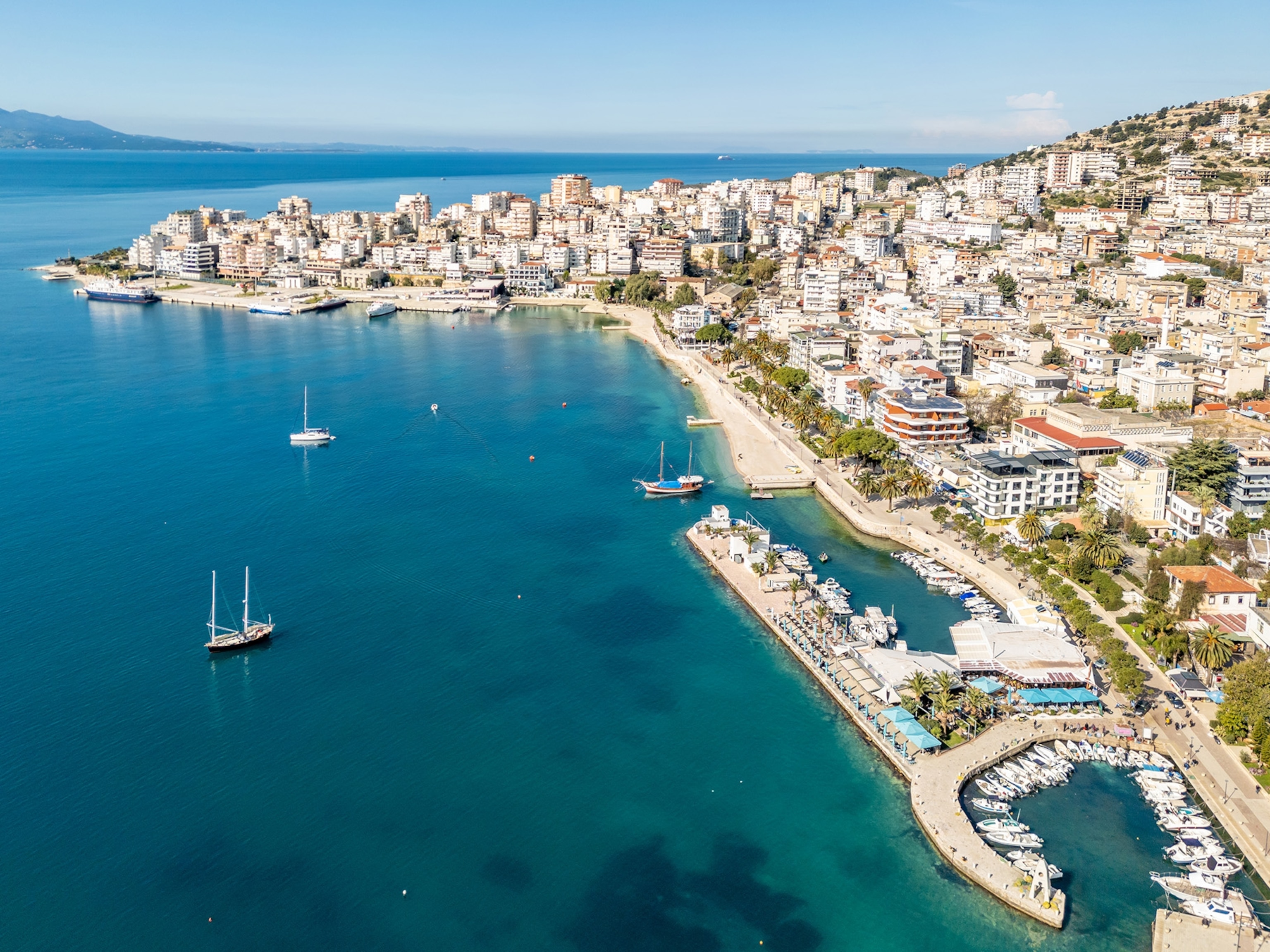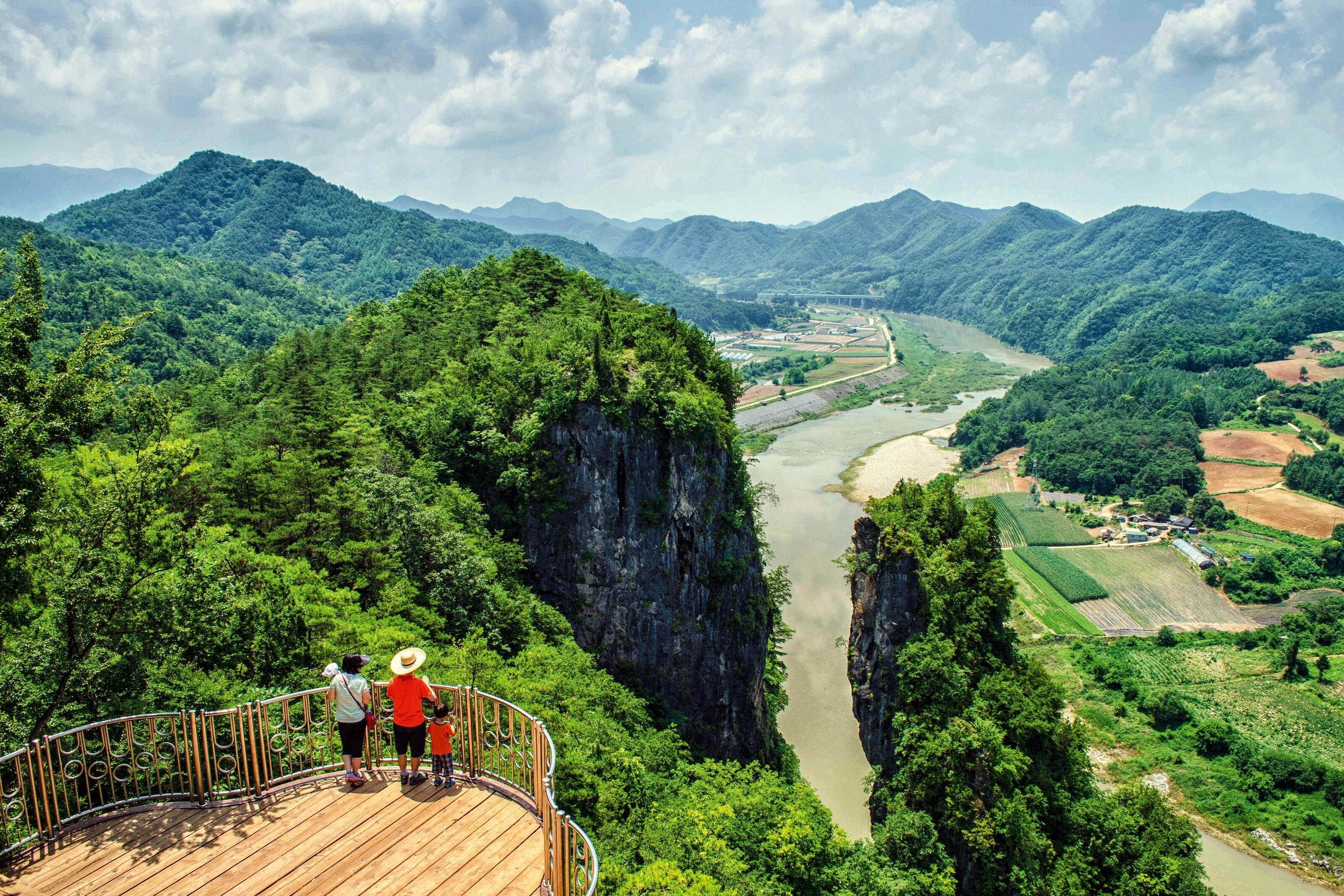
How to plan a road trip through Gangwon, South Korea
Situated in the country’s rugged northeast, Gangwon Province is where Koreans go to commune with nature.
With its craggy peaks, pine forests, world-class ski slopes and beaches home to ideal surfing conditions, Gangwon is an outdoor-lover’s paradise. It’s also a fascinating cultural destination, with vibrant cities, warm people and hearty cuisine. And, given that the province is easily accessible by car, a road trip is the perfect way to take in this magical corner of the country.
Day one: Chuncheon
Gangwon’s laid-back provincial capital is nestled on the shores of a lake at the confluence of the North Han and Soyang rivers, making it a scenic and relaxing place to start your journey. Just 30 minutes west of town is Nami Island, famous for its ginkgo trees in autumn. Amble along its bucolic footpaths before heading to nearby Gyeonggang Station — this abandoned train depot is now home to a railbike where you can pedal down the old tracks and soak up the tranquillity of local rural life.
Head back to town for a lunch of makguksu (cold buckwheat noodles), check out the new Legoland Korea theme park on Jungdo Island or, if you’re up for more exercise, rent a canoe and cruise placid Uiam Lake along the Mullegil water path. For sweeping views, don’t miss the Gubongsan Mountain Observatory Cafe Street before finishing the day with dinner on ‘Dakgalbi Street’ in downtown Chuncheon, where a host of restaurants serve up the city’s speciality of spicy stir-fried chicken.
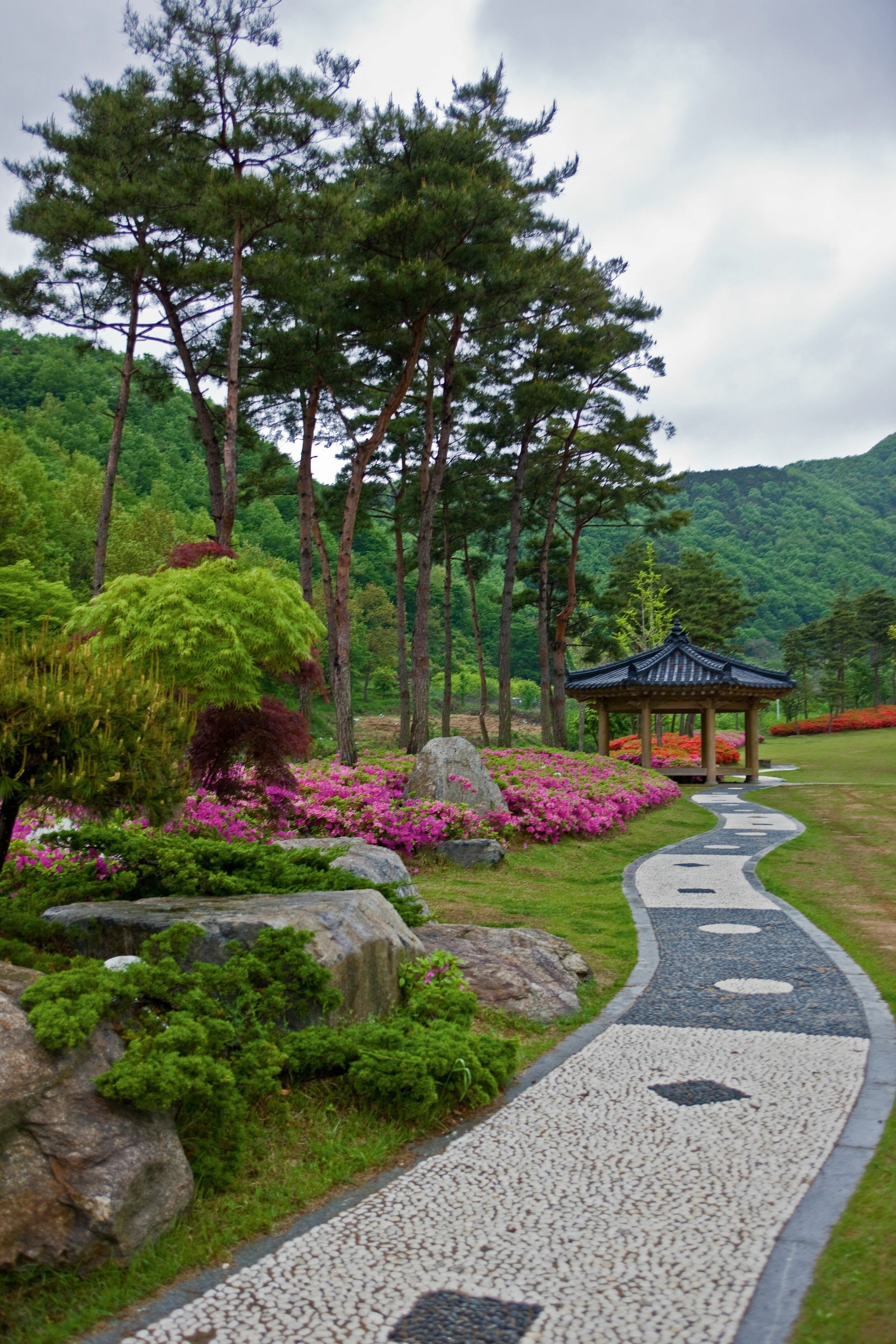
Day two: Pyeongchang
Head south to Pyeongchang, the mountainous region that held the 2018 Winter Olympic Games and will host the Winter Youth Olympics in 2024. For alpine sports, shoot over to the slopes of Yongpyong Resort for the best skiing and snowboarding in the country; in the warmer months, you can also enjoy zip-lining, golf or the resort’s water park. Make time for Jeongangwon, a hanok-style complex dedicated to Korea’s traditional food culture, and for a dose of tranquillity, stop by Woljeongsa Temple. This 1,000-year-old Buddhist site sits on the Odaesan mountain, and its surroundings offer excellent hiking.
Day three: Seoraksan, Sokcho
For hiking, it’s hard to top Seoraksan, the country’s third-highest and arguably most majestic peak. Located in a national park, this massif of ridges and stoney spires looms over the seaside city of Sokcho. Start the day with a stroll around Sinheungsa Temple before tackling the 800 or so stairs to the top of the dramatic rock formation of Ulsanbawi (2,874ft), or jump on the Seoraksan Cable Car to the ruins of Gwongeumseong Fortress. If you want more adventure, trek up and along Dinosaur Ridge or scale the mountain’s main peak, Daecheongbong, which offers amazing views of the park, Sokcho, and the East Sea. Finish it all off with a much-needed soak at the Osaek Carbonated Hot Springs.
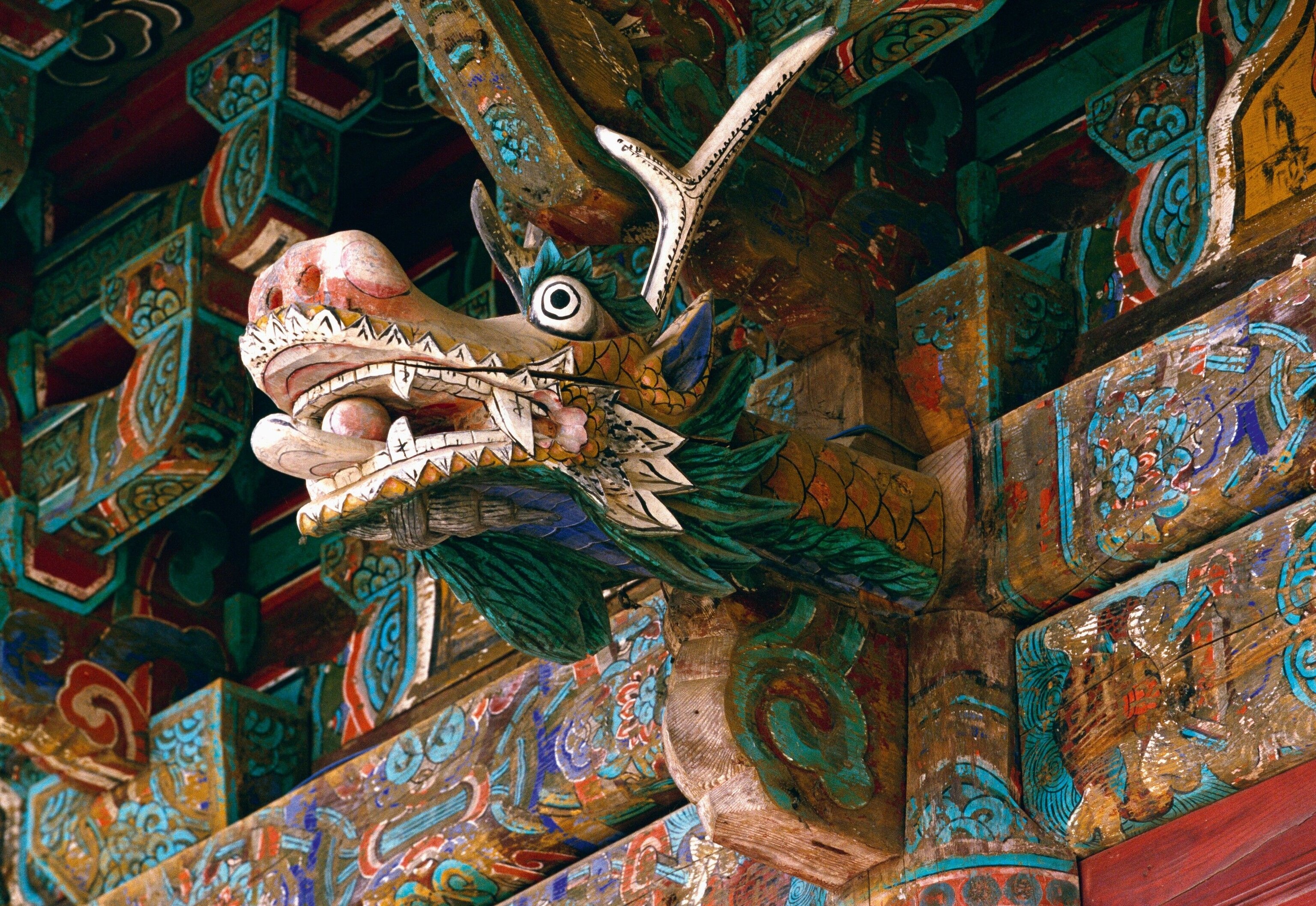
Day four: Sokcho
Set before the picturesque backdrop of Seoraksan, Sokcho is one of Korea’s most charming areas. While tourism has taken off in recent years, fishing is still the backbone of the local economy. Head down to the Sokcho Tourist & Fishery Market to try delicacies such as ojingeo sundae (stuffed squid), saewoo twigim (deep-fried shrimp) or dak kang jung (sweet crispy fried chicken), before jumping on the gaetbae, the hand-pulled pedestrian cable ferry that goes to Abai Village — a settlement of North Korean refugees that dates back to the Korean War. In the afternoon, head to Sokcho Museum or Sokcho Beach. End the day by watching the sun dip behind the Seoraksan ridge from the top of Sokcho Expo Tower before having dinner at one of the many restaurants near the market.
Day five: Yangyang’s Surfyy Beach
For your last day, head south through the town of Yangyang to Surfyy Beach. This stretch of sand was once military property but is now a designated surfer’s beach. While the waves don’t often get bigger than beginner level, it’s still possible to get up on your board for a few mellow rides. Unlike Surfyy Beach, the south end of the sand (called Hajodae Beach) is open for swimming, and whether you choose to get into the water or not, this particular seaside spot is one of the most scenic in Korea, making it the ideal place to breathe in the fresh sea air and wind down after several days on the road.
For more information, go to eng.gwd.go.kr/gw/eng
Follow National Geographic Traveller (UK) on social media
Facebook | Instagram | Twitter
